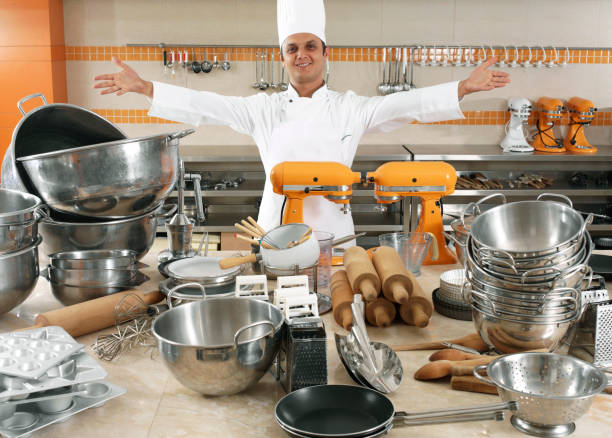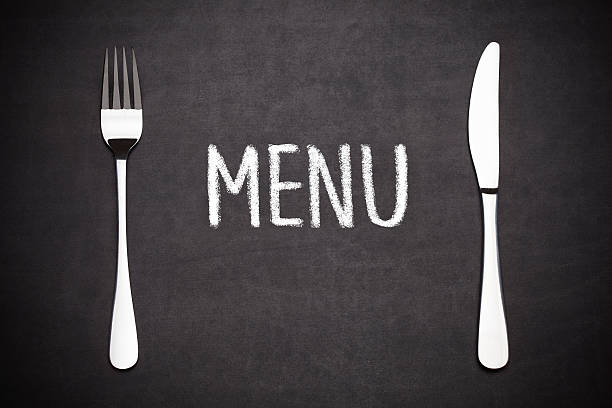The demand for convenient, healthy food is higher than ever. Many people want to eat nutritious, home-cooked meals but lack the time or energy to prepare them. This gap in the market has created a massive opportunity for entrepreneurs, making the meal prep industry a fertile ground for a new home-based business.
Starting a small meal prep business from home allows you to turn your passion for cooking into a profitable venture with relatively low startup costs. You can control your schedule, be your own boss, and make a positive impact on your community’s health and wellness. This guide provides a comprehensive, step-by-step plan to help you launch and grow a successful home meal prep business. We will cover everything from legal requirements and menu planning to marketing strategies and customer service, giving you the foundation you need to thrive.
Laying the Legal Foundation

Before you chop a single vegetable, it’s crucial to ensure your business is legally compliant. Navigating the legal landscape can seem daunting, but breaking it down into manageable steps makes it much simpler.
Business Licenses and Permits
First, you’ll need to register your business. The structure you choose (sole proprietorship, LLC, etc.) will have tax and liability implications, so it’s wise to research which is best for your situation. You will also need a general business license from your city or county.
Additionally, food businesses are subject to specific regulations. Look into cottage food laws in your state, which often govern the sale of food made in a person’s home. These laws vary significantly, so contacting your local health department is a critical first step. They can provide a checklist of the permits and licenses required to operate a home meal prep business.
Food Safety and Certifications
Ensuring the safety of your food is non-negotiable. Most jurisdictions require a food handler’s permit or certification, such as the ServSafe certification. This course teaches essential food safety practices, including proper cooking temperatures, cross-contamination prevention, and safe food storage. Displaying your certification not only meets legal requirements but also builds trust with your customers.
Home Kitchen Inspections
Your home kitchen will likely need to pass an inspection by the local health department. An inspector will check that your kitchen meets specific standards for cleanliness, sanitation, and equipment. They will look for things like:
- Adequate hand-washing stations.
- Proper food storage solutions (e.g., separate refrigerators for business and personal use).
- Sanitized surfaces and equipment.
- Pest control measures.
Contact your local health department to schedule an inspection and get a detailed list of their requirements beforehand. This will give you time to make any necessary adjustments.
Equipping Your Kitchen for Success

You don’t need a commercial-grade kitchen to start, but having the right equipment is essential for efficiency and quality.
Essential Kitchen Equipment
Start with the basics and invest in higher-end equipment as your business grows. Here’s a list of must-haves:
- High-Quality Knives: A sharp chef’s knife, paring knife, and serrated knife are fundamental.
- Cutting Boards: Use separate, color-coded cutting boards for raw meats, poultry, fish, and produce to prevent cross-contamination.
- Pots and Pans: A variety of sizes will be necessary for cooking different components of your meals.
- Food Processor and Blender: These are invaluable for making sauces, dressings, and chopping vegetables quickly.
- Measuring Cups and Spoons: Accuracy is key in recipe consistency.
- Digital Food Scale: Essential for portion control and consistent meal sizing.
- Instant-Read Thermometer: Crucial for ensuring food is cooked to safe temperatures.
Storage and Packaging
Proper storage and packaging are vital for maintaining meal freshness and safety.
- Storage Containers: Invest in commercial-grade, airtight food storage containers for your ingredients.
- Packaging Supplies: Choose high-quality, microwave-safe, and freezer-safe meal containers for your customers. Consider eco-friendly packaging made from biodegradable or recyclable materials as a key selling point. This aligns with the values of many health-conscious consumers.
- Labels: Clearly label each meal with the dish’s name, ingredients, potential allergens, and reheating instructions.
Crafting an Irresistible Menu

Your menu is the heart of your meal prep business. It should be appealing, cater to various dietary needs, and be efficient to produce.
Define Your Niche
Instead of trying to please everyone, focus on a specific niche. This could be:
- Diet-Specific: Keto, paleo, vegan, gluten-free.
- Goal-Oriented: Weight loss, muscle gain, general wellness.
- Cuisine-Focused: Mediterranean, Asian fusion, classic American comfort food.
A clear niche helps you stand out and attract a dedicated customer base. For inspiration, look at successful businesses like Green Chef, which specializes in organic and gluten-free meal kits, or Territory Foods, which partners with local chefs for culinary variety.
Plan for Versatility and Efficiency
Create a menu that uses overlapping ingredients to minimize food waste and streamline your cooking process. For example, grilled chicken can be used in salads, wraps, and grain bowls. Roasting a large batch of vegetables allows you to offer them as a side for multiple dishes.
Plan a rotating weekly or bi-weekly menu to keep your offerings exciting for repeat customers. When developing recipes, focus on dishes that hold up well to refrigeration and reheating.
Cater to Dietary Needs
Clearly label meals with nutritional information and common allergens. Consider offering personalized meal plans developed by certified nutritionists. This unique selling point can set you apart and provide immense value to clients with specific health goals or restrictions.
Marketing Your Meal Prep Business

Once you have your legalities, equipment, and menu sorted, it’s time to find customers.
Build an Online Presence
A professional website is your digital storefront. It should feature high-quality photos of your meals, your menu, pricing, and a simple way for customers to order. An FAQ page can also be helpful.
Social media is a powerful tool for a small food business. Use platforms like Instagram and Facebook to showcase your delicious meals, share behind-the-scenes content, and engage with your community. Run promotions and contests to build excitement and attract followers. For example, Snap Kitchen effectively uses social media to highlight their healthy, portion-controlled meals.
Local Partnerships
Connect with local businesses that share your target audience. Partner with gyms, yoga studios, nutritionists, and corporate wellness programs. Offer them a commission for referrals or provide exclusive discounts for their members. This creates a mutually beneficial relationship and expands your reach within the community.
Streamlining Your Operations
An efficient workflow is key to scaling your home meal prep business.
Order and Payment Systems
Set up a user-friendly system for taking orders. This could be through your website, a dedicated app, or even a simple Google Form to start. Offer secure online payment options to make the process seamless for your customers.
Sourcing Ingredients
Establish relationships with reliable suppliers. This could include local farms for fresh produce or wholesale suppliers for bulk dry goods. Sourcing locally and sustainably can be another unique selling point. As you grow, exclusive access to a network of suppliers can help you procure ingredients cost-effectively.
Production and Delivery
Create a detailed prep and cooking schedule. Block out time for shopping, chopping, cooking, and packaging. As your business grows, you might hire help for specific tasks.
Plan your delivery routes to be as efficient as possible. Use insulated bags with ice packs to keep meals at a safe temperature during transit. Offer specific delivery windows so customers know when to expect their food.
Delivering Excellent Customer Service
Happy customers are the lifeblood of any business.
- Be Responsive: Answer questions and address concerns promptly and professionally.
- Gather Feedback: Actively seek feedback on your meals and service. Use surveys or personal follow-ups to show you value their opinion and are committed to improvement.
- Personal Touches: A handwritten thank-you note or a small, unexpected treat can go a long way in building customer loyalty.
Your Path to a Thriving Business
Starting a small meal prep business from home is an exciting journey that combines passion with profit. By carefully planning your legal structure, equipping your kitchen, designing a smart menu, and marketing effectively, you can build a successful and fulfilling business. Remember that the journey of an entrepreneur is one of continuous learning and adaptation. Stay passionate, listen to your customers, and don’t be afraid to evolve. The demand for healthy, convenient meals is here to stay, and your home-based business is perfectly positioned to meet it.
FAQ How to Start a Meal Prep Business From Home
What initial investment is required to start a meal prep business from home?
The initial investment can vary widely, typically ranging from $500 to $5,000 depending on the equipment you already own and the scale of your initial operations. Key expenses include kitchen equipment, storage containers, packaging supplies, marketing materials, and legal permits.
What business licenses and permits do I need to operate a meal prep business from home?
You will likely need a business license, along with food safety certifications like ServSafe. Additionally, your kitchen may need to pass inspections by local health authorities. Regulations vary by state and locality, so it’s essential to check with your local government.
How do I ensure the safety and freshness of the meals I prepare?
Maintain strict hygiene practices, use high-quality, fresh ingredients, and follow proper cooking and cooling procedures. Store meals in airtight containers at appropriate temperatures and provide clear instructions to customers on how to store and reheat their meals safely.
How can I market my meal prep business effectively?
Effective marketing strategies include creating a professional website and social media presence, offering promotional discounts, and partnering with local businesses such as gyms and wellness centers.
How do I create a menu that caters to different dietary needs?
Research popular dietary trends and common restrictions. Offer a variety of meal options and clearly label each meal with its ingredients and nutritional information. Consider consulting with a nutritionist to ensure your menu meets specific dietary requirements.
How do I handle meal delivery and ensure meals arrive fresh?
Plan your delivery routes efficiently and use insulated containers with ice packs to maintain proper temperatures. Offer scheduled delivery windows and consider providing tracking information for customers.
What are some strategies for scaling my meal prep business?
As demand grows, you can expand your kitchen space, invest in more equipment, and hire staff. Automating tasks like menu planning and inventory management with software can also help you scale efficiently.
How do I manage inventory and reduce food waste?
Implement a system for tracking inventory and purchase ingredients based on demand. Use a first-in, first-out (FIFO) system and consider donating excess food to local food banks or composting food scraps.
Disclaimer: This guide provides general information and does not constitute legal or financial advice. Consult with a legal professional and your local authorities to ensure full compliance with all relevant laws and regulations in your area.